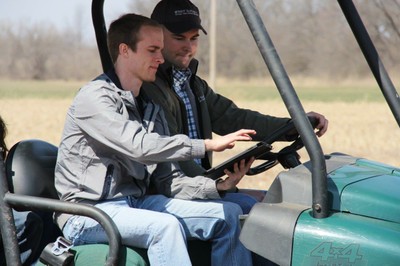 |
 SOIL 4213 Precision Agriculture |
Soil 4213 Precision Agriculture

It can be said that the practice of precision agriculture was enabled by the advent of GPS and GNSS. The farmer's and/or researcher's ability to locate their precise position in a field allows for the creation of maps of the spatial variability of as many variables as can be measured (e.g. crop yield, terrain features/topography, organic matter content, moisture levels, nitrogen levels, pH, EC, Mg, K, etc.). Further, these maps can be interpolated onto a common grid for comparison (see Whelan et al. (2003) and the reference to the VESPER kriging system). Spatial and temporal variability of crop variables are at the heart of PA, while the spatial and temporal behaviours of that variability are key to defining amendment strategies, or 'recipe maps'. Recipe maps would be the output of any generalized decision support system that could be defined for farm use. Precision agriculture has also been enabled by technologies like crop yield monitors mounted on GPS equipped combines, the development of variable rate technology (VRT) like seeders, sprayers, etc., the development of an array of real-time vehicle mountable sensors that measure everything from chlorophyll levels to plant water status, multi- and hyper-spectral aerial and satellite imagery, from which products like NDVI maps can be made, although the costs of these are high, information technology, and geospatial tools.

